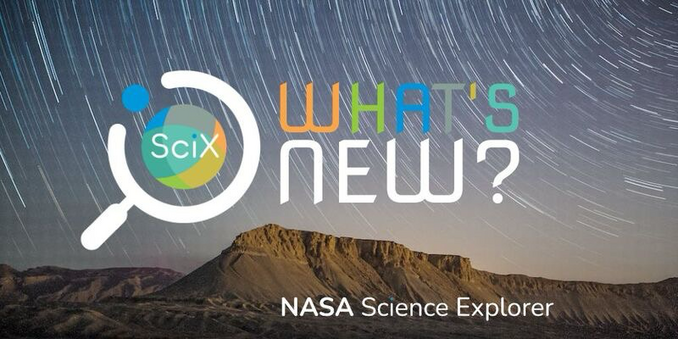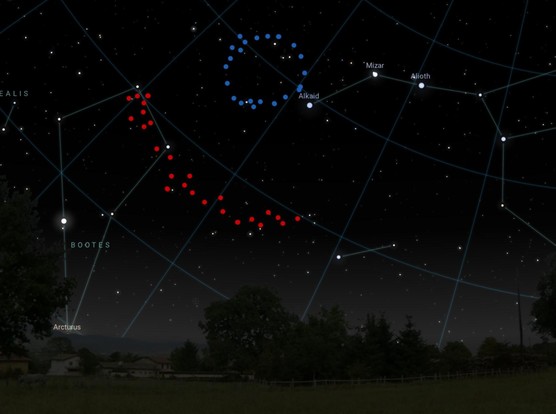@SciBry Are you doing the upcoming winter meeting? For the 245th AAS Meeting: 12–16 January 2025, Gaylord National Resort & Convention Center, National Harbor, MD? Also did you speak last year? If so which video number are you? https://vimeo.com/showcase/10963814
#AAS243
If you missed "Searching for Protoplanets in the PDS-201 System with Aperture Masking Interferometry" at #AAS243, check it out on NASA ADS or @SciXCommunity
https://scixplorer.org/abs/2024AAS...24310608Z/abstract
#planetaryscience #planets #astronomy #AASNOLO #ExploreAstronomy #USNA #USNavy #womeninSTEM
If you missed "Searching for Protoplanets in the PDS-201 System with Aperture Masking Interferometry" at #AAS243, check it out on NASA ADS or @SciXCommunity
https://scixplorer.org/abs/2024AAS...24310608Z/abstract
#planetaryscience #planets #astronomy #AASNOLO #ExploreAstronomy #USNA #USNavy #womeninSTEM
With many thanks to the American Astronomical Society (AAS), we are happy to report that abstracts for #AAS243 are now available in the NASA Science Explorer (SciX) library! Interested in more holdings updates? Check out the latest release reports here: https://s.si.edu/3SX5KLF
We're reminiscing on a great week in New Orleans for #AAS243 🤩
Reminisce with us in our latest news post👇
https://rubinobservatory.org/news/rubin-represents
I’m quoted in this Scientific American story about a possible primordial dark/low surface brightness galaxy detected in the radio at #GreenBankObservatory, presented at #AAS243. They took out all the careful caveats of course! (But I know to expect that)
#Astronomy #RadioAstronomy
BZ (Well done), #midshipman!
Thank you for sharing your #NRL #research
"Searching for Protoplanets in the PDS-201 System with Aperture Masking Interferometry"
with #AAS243
#planetaryscience #planets #astronomy #AASNOLO #ExploreAstronomy #USNA #USNavy #womeninSTEM #latinxinSTEM
My abiding memory of #NewOrleans is that drivers don’t stop for pedestrian crosswalks even when the lights are flashing until you step in front of their two tons of speeding metal, and sometimes not even then. And then shout at you for making them stop. A thoroughly unpleasant city. #aas243 #NOLA
New Orleans - for #AAS243 - was scientifically a blast. But the city remains amazing. So much good music (wjblues.com yoshitakaz2tsuji.bandcamp.com amongst many others) & so much good food. Stand out: the blackened redfish at Coop's Place (www.coopsplace.net) which I had a decade ago, and have been craving ever since.
The #aas243 crowd has left town. We have the restaurant opposite the conference centre to ourselves at 12:10pm!
Discovery of the Big Ring, an ultra-large cosmological structure, by Alexia Lopez @morninglopez and her co-authors, further challenges what we understand about the universe.
This finding was announced yesterday at the Winter Meeting of the American Astronomical Society.
✅ AAS 243 Press Conference: https://www.youtube.com/watch?v=86Ps7vE6JHI&t=239s
✅ Research News by UCLan: https://www.uclan.ac.uk/news/big-ring-in-the-sky
✅ The Guardian: https://www.theguardian.com/science/2024/jan/11/newly-discovered-cosmic-megastructure-challenges-theories-of-the-universe
✅ BBC News: https://www.bbc.com/news/science-environment-67950749
@kellylepo
1.3bn LightYear Diameter 'Big Ring' Discovery Announced at #AAS243
to go with her 3.3bn LightYear Long 'Giant Arc'
c/o Alexia Lopez
https://uclan.ac.uk/news/big-ring-in-the-sky
And with that, it's a wrap. Thanks #AAS243. It was fun!
Day 4 of #AAS243.
We had a visitor who came to supervise the booth takedown.
At a #AAS243 press conference to hear UCLan's Alexia Lopez present on her discovery of a giant ring of galaxies 1.3 billion light-years across, to add to her prior discovery of a 'giant arc'. Nice article here: https://t.co/65CQcDRDLE
That said: I'm pretty skeptical of the claim. The fact that the two structures are at about the same distance suggests that there might be some systematic effect - I don't see any reason the Universe would have a particular epoch of massive structures. #astrodon
Today is the LAST DAY of #AAS243 in New Orleans. Have you stopped by the STScI booth to talk about Hubble, Webb, Roman, MAST and employment opportunities?
If you did stop by the booth this week, what did you learn from our experts that you want others to know?
Science Highlights from the #JWST town hall at #AAS243:
- More than 700 JWST papers published so far.
- JWST found thousands of galaxies in the early universe, which are brighter and more numerous than expected.
- There are a lot of active supermassive black holes in the early universe, which may require massive seeds.
- Detecting molecules in the atmospheres of giant exoplanets is easier than expected, but the atmospheres of rocky planets are hard to measure.
Tonight's "JWST Town Hall" at #AAS243 gave updates about the performance of the observatory, reviewed the status of science operations, and provided a summary description of Cycle 2 approved proposals, as well as the submitted Cycle 3 proposals.
This animation portrays the creation of the cat’s tail in the southwest portion of Beta Pic’s secondary debris disk, estimated to span 10 billion miles.
Read today's #AAS243 release to learn more: http://webbtelescope.pub/3RXt9Nx

